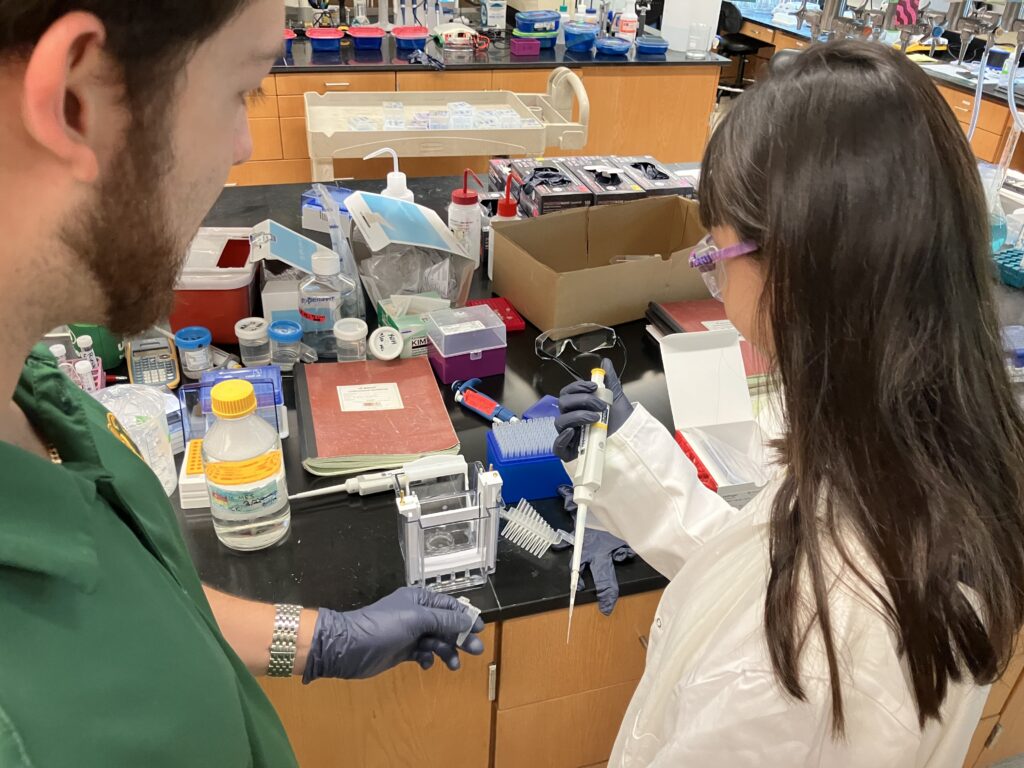Making chemistry accessible to blind and visually impaired people requires a universal new data format that translates 2D images into tactile and visual displays.
For several years, a team of sighted and blind chemists have worked to make this a reality, recently unveiling two 3D formats for displaying chemistry data for visually impaired high school students. With these tools the students were able understand and interpret chemistry concepts and complex protein structures and felt more included and excited about pursuing science.
The motivation for this project comes from the lived experiences of chemists with visually impaired relatives and blind chemists themselves. For Bryan Shaw, a biochemist at Baylor University, he was motivated by the experiences of his visually impaired son. “My research is always a shadow of my son’s own development,” he said. “He is 15 and for the past seven years, he’s been interested in science.”
19th century art inspires 21st century chemistry
To facilitate the interest of his son and his visually impaired friends Shaw teamed up with several sighted and blind colleagues to make a universal data format for chemistry. “You don’t want one set of data for people without eyesight and one set of data for people with,” he said, “you want there to be maximum resolution, maximum information for both.”
The team needed something that simultaneously produced high-resolution, tactile, and visual displays, and found it in an art form first patented in 19th century France: the lithophane.
Lithophanes are images engraved on thin translucent surfaces. This creates a slightly raised 3D topographical image that when lit from behind, displays differences in thickness as differences in shade.
Shaw hypothesized that this technique would allow the visually impaired to feel the images and interpret them based on shape and height while sighted colleagues would see a high-resolution 3D image. The team tested this technique, along with 3D candy sized models of things like protein structures, with blind and blindfolded Ph.D. students.
They found they were able to convert any 2D image into a lithophane using free online software and students could use these to interpret the most common data outputs in biochemistry like protein structures and SDS-PAGE results. The mini models were also successful and provided tactile representations of the core unit of biochemistry, proteins.
With these tools perfected, the team ultimately wanted to bring these materials to the next generation of potential chemists: blind and visually impaired high school students.

The next generation of scientists
In a paper published in Science Advances, the team unveiled a lithophane codex to convey the structure of butterfly wings at increasing magnification. The first page is a lithophane of the entire insect which according to Shaw, some of these students did not know what shape a butterfly was. Each following page revealed the structure of the wings under different levels of magnification with an electron microscope, ending with a molecular model of the chitin molecule — chitin being a protein involved in many insect structures.
“We would give them this book and just let them peruse it and not tell them much about it,” Shaw explained. Afterward, the team asked the students questions about the book. “They were able to perfectly interpret it and visualize it, just as well as kids with sight,” said Shaw.
Next, the team ran a similar experiment with the 3D micro models of proteins with the goal of teaching students how proteins change shape. Students would be given a protein model, roughly the size of a peanut M&M, which they could study with their fingers. “We did this about eight times,” said Shaw. “Sometimes we gave them the same structure, sometimes we gave them the same protein but in a different shape and sometimes we gave them a totally different protein.”
Again, after studying the models the students correctly answered questions about the proteins. “They were able to recall and identify the right structure, just as well as sighted kids looking at it on a computer screen,” Shaw said.
This was an extremely exciting result, said Shaw. “A protein structure is the most complex 3D image we ever teach in science and these kids, without knowing much biochemistry are able to identify them.”
Showing that the learning materials worked, meaning the students could understand and use them, was only one part of this experiment. The team was also curious about the students’ attitudes and feelings of belonging after being exposed to science in a way that meshes with their perception of the world.
Unsurprisingly to Shaw, most students, after spending the three days in the lab visualizing the data and meeting Ph.D. students with blindness, reported a greater sense of belonging. The surprise came when several students reported that the new materials didn’t increase their interest in science.
After probing a little further these students revealed that their interest was already at a maximum. “Those are the people we want to reach,” said Shaw, “because they want to be scientists, but its going to be hard unless we make things accessible.”
Accessibility is accessible
Shaw and his team believe this work provides a low-cost and scalable solution for bringing chemistry data to students with visually impairments. A major takeaway for Shaw is, “accessibility is accessible.” Meaning anyone can get involved with these types of projects.
According to him, these are skills that already come natural to scientists. “That’s really all we do as chemists is create assistive technology to help us see the super small world below the diffraction limit of visible light.”
In a way, all scientists are blind and constantly developing tools and techniques to quantify and map the natural world. Adding yet another method for data to be presented to new groups of people unlocks potential new insights and breakthroughs as colleagues with unique perspectives work together on the same problems.
Source: Emily A. Alonzo, et al., Universal pictures: A lithophane codex helps teenagers with blindness visualize nanoscopic systems, Science Advances (2024) DOI: 10.1126/sciadv.adj809
Feature image credit: Bryan F. Shaw

















